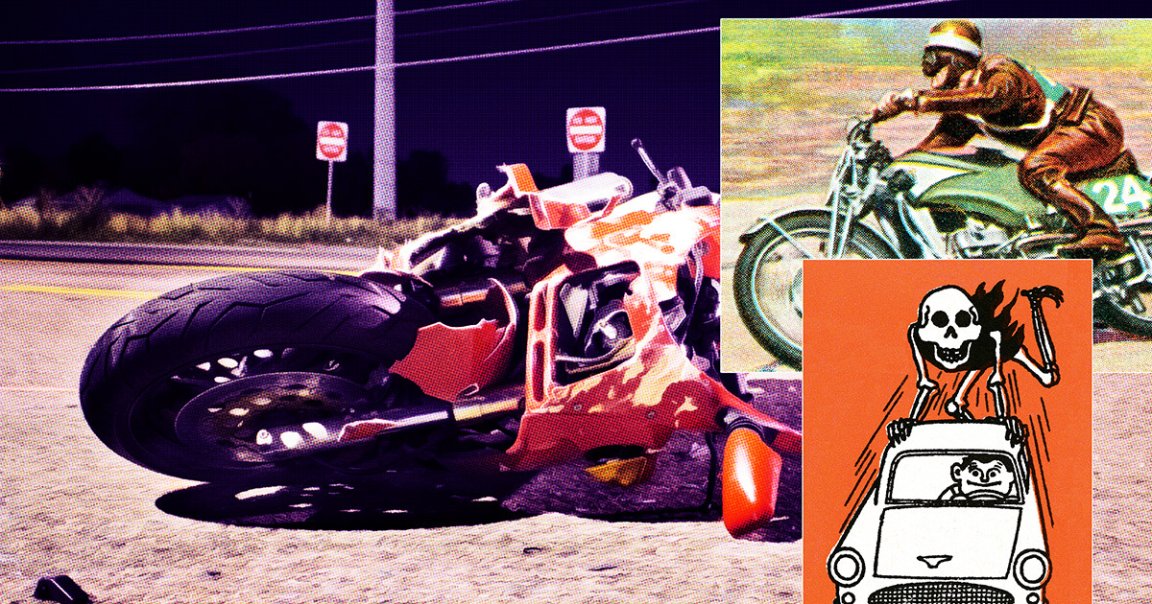
Teslas get a bad rap these days. Aside from the whole Elon Musk thing, the electric vehicles are becoming notorious for shoddy construction, massive consumer recalls, and sketchy self-driving software.
There is, however, one thing Teslas seem to excel at: mowing down motorcyclists.
According to a new analysis by FuelArc, Teslas have a totally unique propensity for plowing over motorcyclists among self-driving cars — supporting a belief among some motorcyclists that Teslas are particularly dangerous to ride next to.
FuelArc‘s analysis scrapes National Highway Traffic Safety Administration (NHTSA) data on self-driving collisions dating back to 2022. It found that Tesla logged five motorcycle fatalities in the past three years, the only self-driving vehicle manufacturer to do so.
In other words, of all the recorded motorcycle deaths involving a self-driving vehicle, a Tesla was responsible for every single one.
While motorcycle deaths are certainly tragic, they’re unfortunately nothing new in our world of 6,000 lb SUVs and lifted trucks. What is alarming, FuelArc notes, is the fact that Teslas are killing motorcyclists overwhelmingly from behind.
In four of the five cases reviewed, NHSTA data and news reporting shows the Teslas sustained some kind of front-end impact — meaning the self-driving software is failing to register motorcyclists before it’s too late.
And it’s not just drivers on two wheels. The NHTSA previously forced Tesla to issue a recall on self-driving vehicles in 2022 after numerous incidents where the EVs barreled headfirst into emergency vehicles. Though the NHTSA graciously redacts Tesla crash statistics at the corporation’s request, its 2022 investigation found Musk’s cars have a knack for “frontal plane crashes” — a fancy way to say “ramming into stuff at full speed.”
Sadly, many of these deadly frontal crashes could have been prevented. Of all the self-driving Tesla crashes analyzed by the NHTSA, 93 percent of them involved hazards “visible to a human in time to either avoid the accident entirely or at least take action to mitigate the severity of the accident,” according to FuelArc.
While some will no doubt argue that five motorcycle fatalities is too small a sample size to draw any conclusions from, the simple fact that there are any self-driving fatalities at all suggests something is seriously wrong with this tech.
As software, self-driving remains under-regulated by safety authorities. Thanks to commercial licensing laws, Tesla is allowed to claim that its self-driving software is proprietary, meaning we have very little information about how these cars make their life-altering decisions. Nonetheless, we still allow them on our roads, a decision that turns motorists, pedestrians, and cyclists like into human guinea pigs.
While this grand experiment has been underway throughout the US since 2018, residents of Austin, Texas are about to become rats in a whole new type of maze: Tesla’s “unsupervised full self-driving” program, slated to start in June.
The NHTSA is currently reviewing whether Tesla’s previous recall in 2022 was effective at ending front-end dive bombs (spoiler alert, it wasn’t). What it decides as Musk culls the agency’s staff remains to be seen, but unless lawmakers drastically upend their current approach to regulation, the self-driving bloodbath isn’t likely to end anytime soon.
More on self-driving cars: Someone Else Tested Whether a Tesla Will Really Crash Into a Wall Painted Like a Road